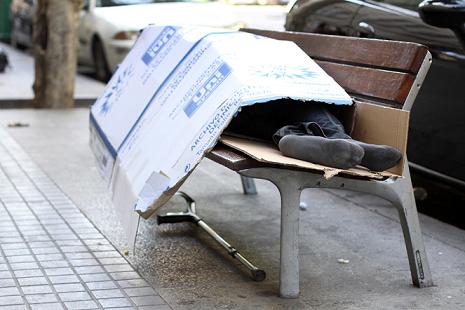Number of women sleeping on Barcelona’s streets falls by 35% in a year
The city council links the decrease with the creation of new shelters specifically for women

There are around 50 fewer women sleeping on the streets in Barcelona than there were in January 2020. This means that over the pandemic, there has been a 35% decrease in female homelessness in the city.
The Barcelona city council believes that this decrease comes as a result of the creation of new spaces for women seeking shelter, as part of a revived effort to eradicate female homelessness. Some new female-only facilities which have emerged in Barcelona include the residential centers, La Llavor, which opened in October with 40 beds, and La Violeta, in April with 26.
Some of the ways in which these centers work is also ground-breaking - for example, La Llavor encourages its guests to take part in projects and design itineraries which will aid them to reach complete autonomy. There is also significant emphasis on fostering relationships between women while simultaneously prioritizing privacy.
Barcelona’s councillor for social rights, Laura Pérez, has highlighted the importance of designing spaces where women feel “more comfortable,” while not forgetting the fact that there are still 87 women known to be on the streets, as of data from March 2021, and work must continue until that number is 0.
Although, she has confirmed that “these days, we are giving more attention to homeless women,” adding that Barcelona has set an “example” for other cities in demonstrating how important creating “non-masculinized spaces” is in making women comfortable.
There has also been an effort to expand existing services to put more emphasis on helping women. For instance, the Barcelona Center for Emergencies and Social Emergencies (CUESB) opened a specific section dedicated to finding shelter for women, having so far helped 192 people in need.
More men on the street than women
It has always been the case that there has been a much greater male than female presence among rough sleepers in Barcelona. As of March 2021, 87 out of a total homeless population of 930 were women, just 9.4%. In the last 10 years, this percentage has always been somewhere between 11% and 15%.
According to sociological research conducted across several European countries, women are more likely to endure severely abusive situations before going to the streets, meaning that shelterless women have often suffered a much more physically and emotionally damaging situation compared to homeless men.
Moreover, the proportion of women who live or have lived on the street and consequently suffered some form of violence is much higher than that for men, encouraging the municipal government to further emphasise the importance of focusing on safety when creating shelters for women.